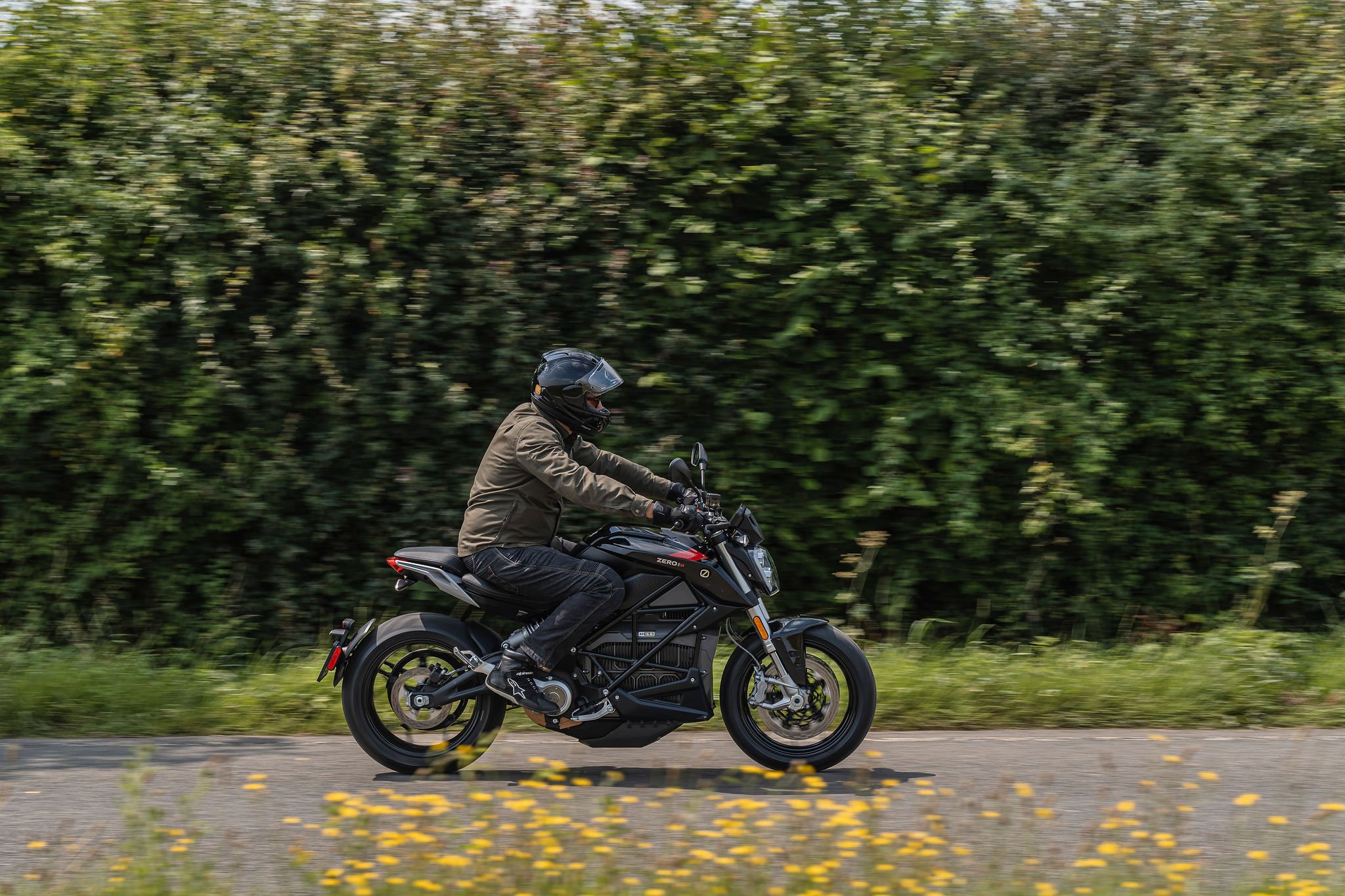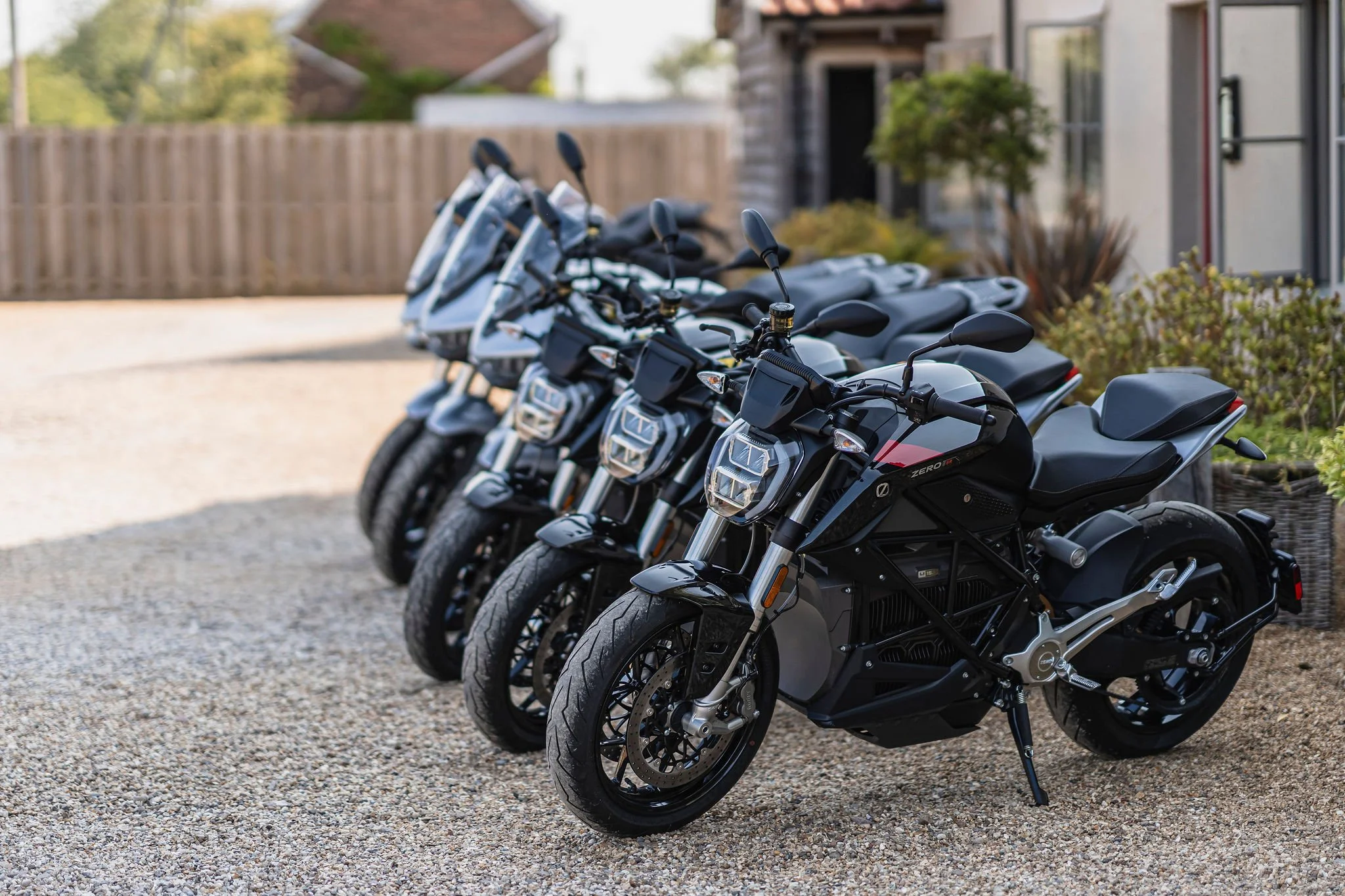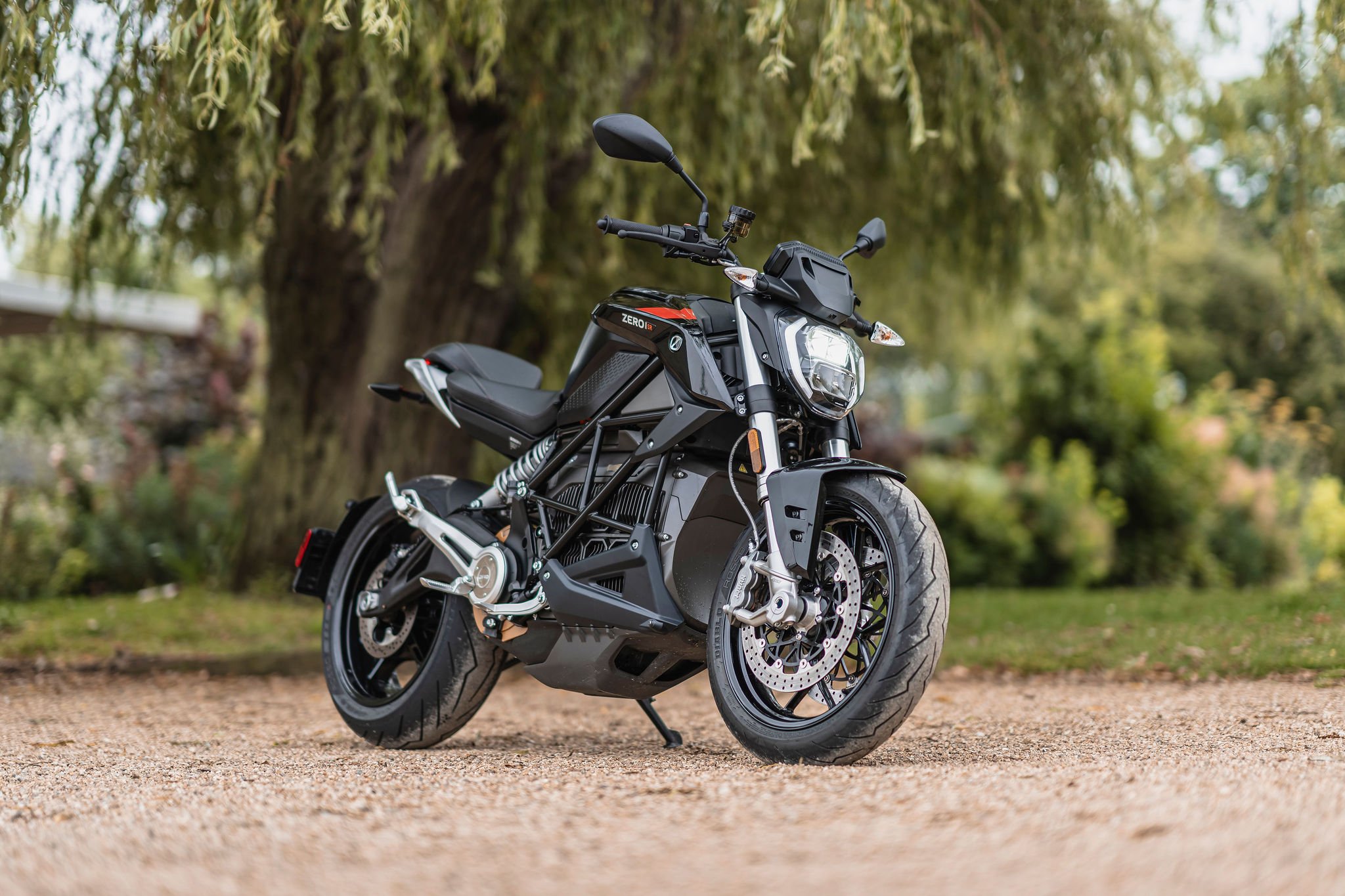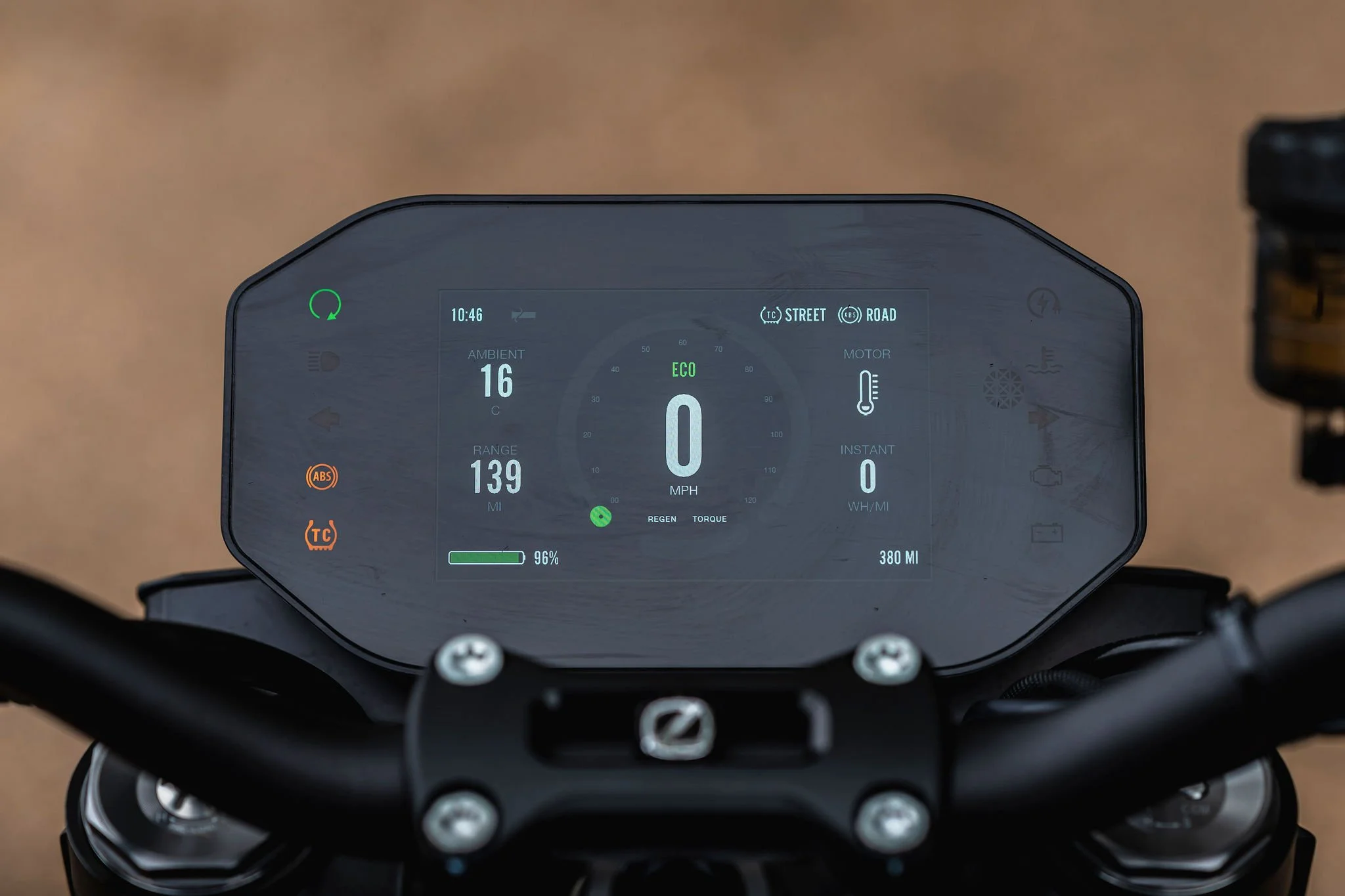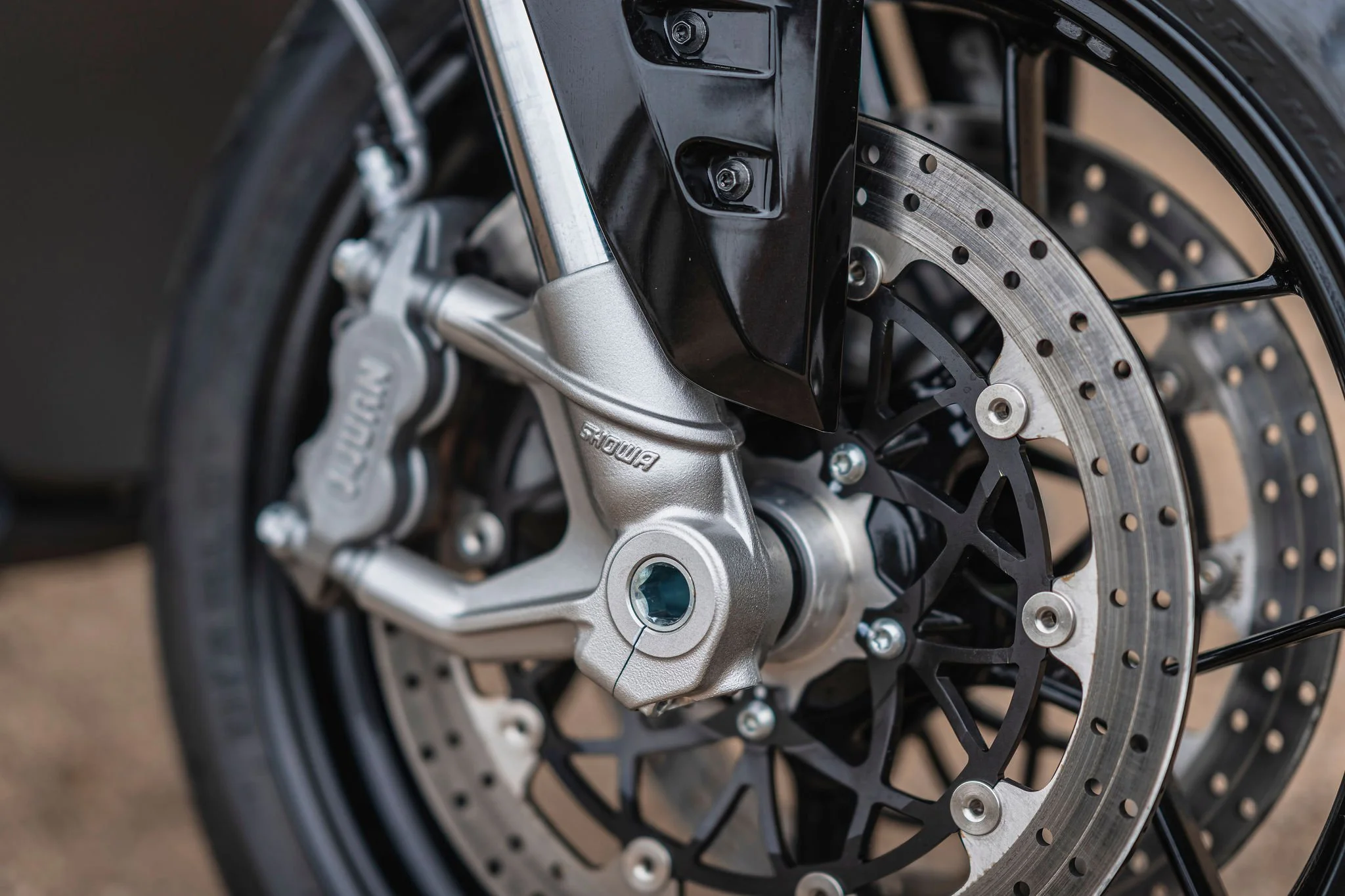Zero SR - 70 Horsepower has never felt so good
I entered the motoring journalism world just before EVs became a controversial talking topic. When I started as a junior freelance writer back in ~2010, I was reviewing conventional internal combustion-engined petrol and diesel cars and, a few years later, motorbikes exclusively powered by petrol—and that was about as diverse as things got. The idea of testing an EV car when I started writing was a novelty, and the idea of testing an EV motorcycle didn't even enter my mind as a possibility.
As the years have passed, I've driven, ridden, reviewed, written about, and talked about more vehicles than I could ever dream of remembering. Occasionally, though, the odd test stands out and forms a lasting impression and memory. Last week, on a sunny day in Suffolk, I tested the new Zero SR, and I'm pretty sure it will be one of those tests that I'll remember for quite some time.
Zero: Who, what and where?
If you're unfamiliar with Zero, allow me to offer a brief introduction. The brand started in 2006 as a Californian technology company. The founder, Neil Saiki, a former NASA engineer, wanted to create a new range of electric motorcycles to take on the combustion-powered competition. The first efforts resembled motocross and dirt bikes, but in a world, and indeed, a country where 'gas is king', the initial reception wasn't exactly warm. Saiki and the team persevered regardless, and by 2010, Zero Motorcycles were being built and shipped globally to customers in bulk, and the early critics were now starting to pay attention.
Fast-forward to 2024, and Zero is now a primary brand for EV motorcycles globally. Demand for the new models has become so high in recent years that the primary factory in California couldn't quite meet the level of demand, so manufacturing and assembly now happen in the Philippines, where all but one remaining Zero model is made.
Zero's current primary mission is to shake off the image of being seen as a technology company that makes bikes and instead be primarily thought of as a motorcycle company that happens to utilise some impressive technology.
Good looking
The UK launch for the Zero SR would be my first proper experience on both a Zero and an electric motorcycle that could potentially rival a petrol-powered sports bike. The day involved around 100 miles of riding on various roads, from duel carriageways to twisty back lanes and country roads. The SR is marketed as a sports street bike, and before I'd even taken a seat on the model, it was clear that, from a design point of view, it had met the brief. Thanks to its conventional design, the SR looks fantastic and would fool even the most fastidious fossil-fuelled motorcycle enthusiast from a few paces away.
Range, power and a very appealing upgrade option
Zero advertises the SR's range of 162 miles in the city and 102 miles on motorways with a full charge. However, beyond wanting to be seen as a 'proper' bike manufacturer, the brand's other mission is to get its customers to think about riding, charging, and, subsequently, range differently compared to petrol motorcycles. More on that subject a little later.
The SR has a single-speed electric motor producing 52kW (70hp) at 5,000rpm. This amount of power enables the bike to be ridden on an A2 licence; however, thanks to the exceptionally clever built-in software, the SR can be 'unlocked' for an additional fee with a software plug-in to offer an upgraded 84kW (113hp), which, as a result, would put the SR into the category of A1 licence holders. This switchable power through software means that a new rider could, in theory, start out with a manageable 70hp and an A2 licence before later upgrading with the suitable licence qualification to get the extra beans when the time is right.
If upgraded to the larger power output, the HP range, torque, and top speed will increase, too. The city range rises to 176 miles, the motorway mileage to 117 miles, and the top speed jumps to a notable 124mph.
What makes the upgradable power most interesting at this moment in time is the price to do so. On paper, the upgrades to the SR transform the bike to the next model up in the range, the SR/F. Prices for the SR start at £16,200, whereas the SR/F is priced at £20,200. The cost to upgrade the SR to the equivalent power is (at the time of writing) just a £350 optional extra, making the upgraded SR somewhat of a bargain against the otherwise £4000 jump between the two models. The two bikes' hardware, design and structure are identical, making the £350 special offer option possibly too good to miss.
For my day of testing, I'd be riding the standard 70HP SR.
The ride
As many riders will already know, 70 horsepower on a motorbike is plenty. It's the near-perfect figure for having a lot of fun before getting into the daft realms of unusable power on public roads. Being electric, the torque figure is impressive at 103 ft-lbs, which rewards a level of fast acceleration similar to a 600-800cc petrol sports bike. It's also enough power to get you out of corners at a grin-inducing rate.
Before setting off and sitting on the bike, everything (except, perhaps, the missing clutch lever and gear selector) felt natural and familiar. The riding position is sporty, but even at 6'1 / 185cm, I felt very comfortable and did so for the duration of the day. Once rolling, the lack of clutch and gears soon turns from an initial noticeable novelty to something quite ordinary- although muscle memory occasionally resulted in my left foot looking for an imaginary downshift as I approached junctions and stop signs.
Once up to speed on the twists, turns, and undulations of the national speed limit roads, I found myself launching from turn to turn. With the twist of the throttle, I was rewarded with stomach crunch-inducing power delivery and shoulder-toning brake power. A common misconception about electric cars and bikes is that they're less fun than petrol equivalents. But, indeed, for the Zero at least, that's simply not true.
The electric powertrain rewards the sort of response most riders could only dream of experiencing from an expensive sports bike. 'But what about the noise?' I hear you cry; well, for a start, there is one. The 52kW motor is surprisingly vocal, producing a noise similar to a Formula-E racing car. It's a blend of a zip and a whir; on an energetic sprint, the sound could even be described as angry.
A frequent drawback for EV vs ICE is weight. Like in cars, the electric equivalents are always significantly heavier; the case is the same with the SR compared to a similarly powered middle-weight ICE bike. The SR weighs 223kg, which can be felt through the brakes and geometry, but - (and this is a crucial 'but') it's barely enough to moan about. The Zero drops into corners and powers out to the straights as if it were a brand with 50 years of motorsport pedigree–It's quite remarkable.
The stopping power is equally impresive, and also quite clever. The rear brake incorporates regenerative braking. The initial bite from the foot pedal is not from the engagement of a brake pad on a disc but from the motor regenerating power. With a firmer push on the pedal, the firmware does engage, adding stopping power via a single 240mm disc on the back wheel, but the response from the regen alone is impressive and, more often than not, enough to scrub enough speed ahead of a corner. The front brake is a conventional hydraulic link from the right handle to two 320mm discs on the front wheel, paired with four-piston J.Jaun callipers.
The suspension feels tight and compliant with Showa 42mm front forks and a 40mm unit at the rear. The front and rear preload can be adjusted to help dial in rebound and damping to suit individual preferences.
It goes well, steers well, stops well, and cleverly rewards additional range through regen braking. Clearly, the Zero SR has many positives, but whilst the EV powertrain does offer many intelligent perks, there is one potential drawback, which may be a deal breaker for some.
Charging times
Like all EV motorcycle manufacturers, Zero can't yet take advantage of fast charging due to size, weight and capacity limitations. While some electric cars are now capable of charging at 350kW, the best-case scenario for the SR is a measly 6kW. This means that even in a best-case scenario, a 10-80% charge will likely take around 1 hour 45 minutes and home charging, or anywhere with a standard socket, will be closer to 4 hours for the same charge. This alone may be the spanner in the wheel for some, especially for those who enjoy riding in groups. The idea of watching your petrol-powered pals fill their tanks in a matter of minutes is likely to sting a little whilst you prepare for an hour-long battery top-up.
But is this really a problem? The engineers at Zero like to think not, and part of their mission as a brand is to get customers to think about adding only as much range as they need. Brimming a petrol fuel tank is a reasonably ordinary thing to do, but in the world of EVs, adding more charge to a battery than is required could be thought of as a waste of time. At a Gridserve charge point, we plugged in the SR to understand the process and realised that with around 15 minutes of charge, we would have comfortably enough range to complete our journey. As many riders will know, a 15-30 minute break on a ride is a relatively typical scenario, allowing for a break from the helmet, a cool down from the jacket and a nice refreshing drink before carrying on.
The perfect commuter
Riders wishing to use the SR or equivalent Zero Motorcycles for regular commuting are likely to be pleasantly surprised for various reasons. The two critical points in my mind are noise and heat.
I like the sound of a thundering V4 as much as the next guy, but there comes a point while filtering through city centre traffic that it becomes less of an admiration and more of an annoyance. The same goes for the slow roasting of your inner thighs from a twisting network of titanium exhaust pipes a few inches below your reproductive organs. Having your legs cooked whilst wrapped in leather or Kevlar is very rarely an enjoyable experience for anyone.
Thanks to the electric motor, neither excessive noise nor heat is ever a concern, and that could be enough of a perk to get riders out of a train, bus, or car and commute to the office on something far more fun instead.
Rider modes and technology
The SR has a few more technological perks in the form of rider modes. Zero offers four preset rider modes (eco, rain, sport and standard) and one customisable setting called Canyon, allowing riders to hand-pick their own presets and preferences for power delivery, ABS, TC and regen. Eco mode cleverly balances power delivery with regen, visibly increasing overall range when riding through towns. The settings are managed via a 12.7cm colour TFT screen, which also displays all the necessary information relating to speed, range, safety aids and even the motor temperature. Cruise control is also included as standard and operated with a simple on-off toggle switch. One final trick to help with the bike's weight is a reverse gear–something rarely seen on two wheels and an exceptionally handy feature in gravel car parks.
Servicing time and costs
As you might assume, an electric bike requires very little servicing, so an annual service that involves checking/replacing brake pads, tyres, and drive belts should cost (at most) 45 minutes of labour per year. That in itself will be a significant cost saving in comparison to ICE sport bike riders needing chain adjustments, valve clearances, and filter swaps on petrol-powered bikes.
To conclude
The Zero SR is worthy of praise. As an overall package in terms of style, comfort, practicality and value, it's all extremely positive, and for the most critical factor: fun - it doesn't miss a beat.
As in the world of cars, there will always be a contingent of riders who prefer the familiarity of petrol. However, I implore anyone sitting on the fence about trying EV power on two wheels to start here and give the Zero SR a go. I'd be utterly amazed if you were left feeling anything but very impressed.
words: John Marcar
photographs: James Archibald

